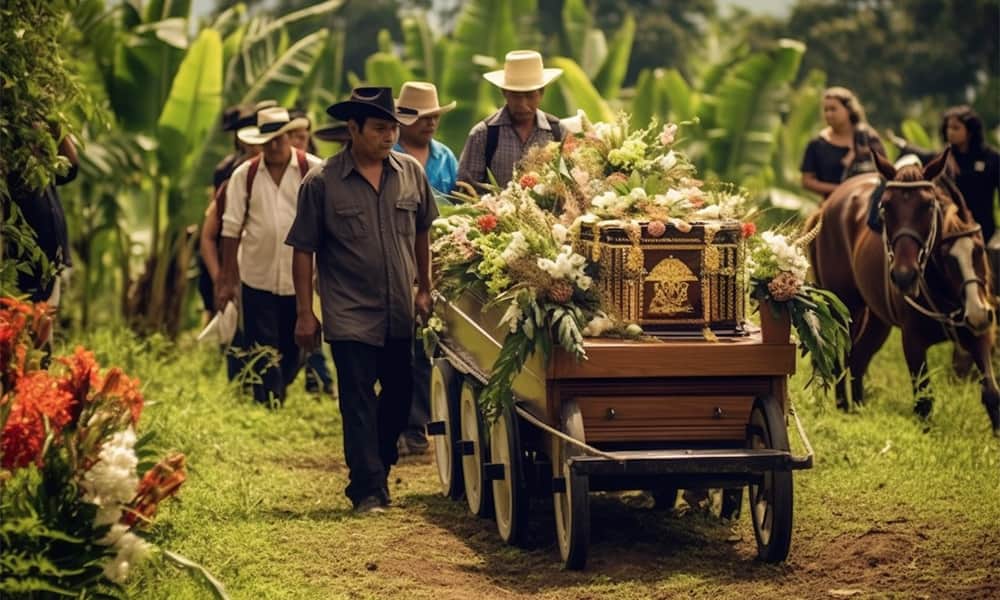When someone dies in a rural area of Costa Rica, time is of the essence. Few can afford the services a funeral home would provide, such as cold storage of the body and preparation of the corpse. Surviving family members gather as quickly as possible. An all night vigil is typically held with the body lying in state nearby–it can be at a church, a chapel or the living room of the recently departed.
Then, with the light of the following day, the body is interred, usually in an above ground tomb. About 15 years ago, my sobrino politico (nephew by marriage) died in a car crash. We got the phone call early in the morning and made the 3 hour trip to the town in the Osa peninsula where he lived. Grieving family members came from all points of the country.
Throughout the day there were hugs, tears, stories of the rambunctious young man we had just lost. As nightfall approached, tensions rose– the body was not yet present. It was on its way back from a long journey. I don’t know about now, but at that time there was only one forensic laboratory in the entire country, located in Heredia. Due to the circumstances of the crash, my nephew’s body was transported several hours north to the lab.
This is routine with any death that is either suffered violently, or with unknown or unclear causes.. His cousin–my niece– is a registered nurse, and was present, as she lived in Heredia. She assisted with the work to make his face presentable, as it had taken much of the impact and was shattered. She later told us that she did not sleep well for some time after. Eventually their work was done, and it was time to bring his body south for the services.
One of my brothers-in-law owned a pickup truck, so he and another brother reclaimed the body in its simple wood casket, loaded it in the back of the truck, secured the coffin so it would not slide around, and made the 7 hour trip to the Osa. They got to town mid-evening. Everyone was at the village church, and the arrival of the body was the unhappy confirmation of the reason we had gathered together. There was one more step before the all night vigil began.
I accompanied my brother-in-law to a local ice making facility, where slabs of ice were purchased and then slid in under my nephew’s body, in order to prevent putrefaction in the heat and humidity. The accompanying of the dead before burial is a tradition in some sectors of Costa Rica, particularly in the campo.
Explanations are varied, but are usually centered around the idea that the family is protecting the soul of the deceased in its last moments before being interred. The atmosphere would have looked festive to an outsider with groups gathered both inside and outside the church. Here and there, outside, a bottle was passed. Inside people walked by the casket. They had done a decent job restoring his handsome face, though there was a distortion–inevitable given the circumstances.
After daybreak, we went to the local cemetery where the coffin was placed inside an above ground tomb and sealed. When the interment was complete, we hugged and said our good byes and drove away.
It had been only 48 hours between the phone call and our return home from the funeral.

